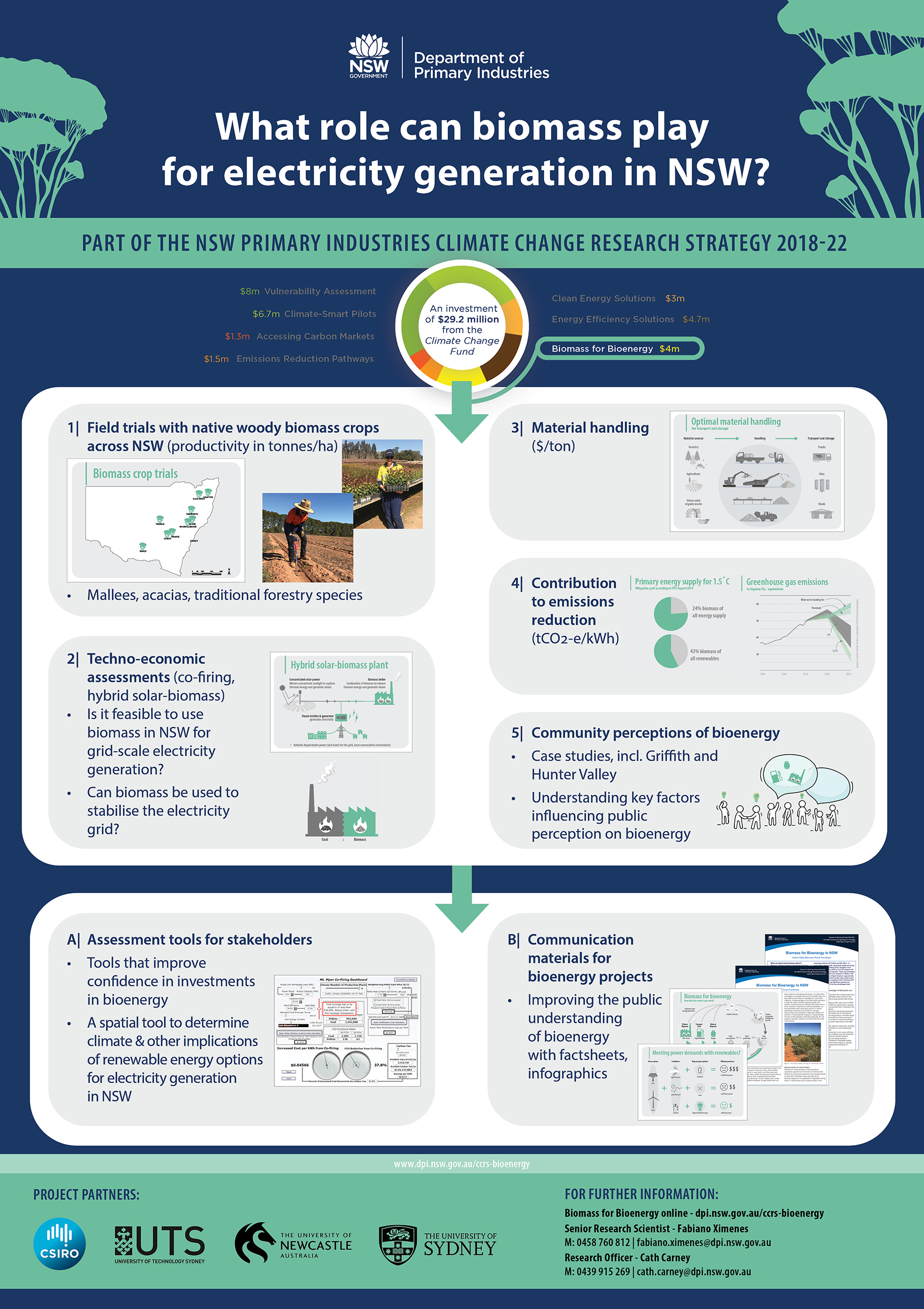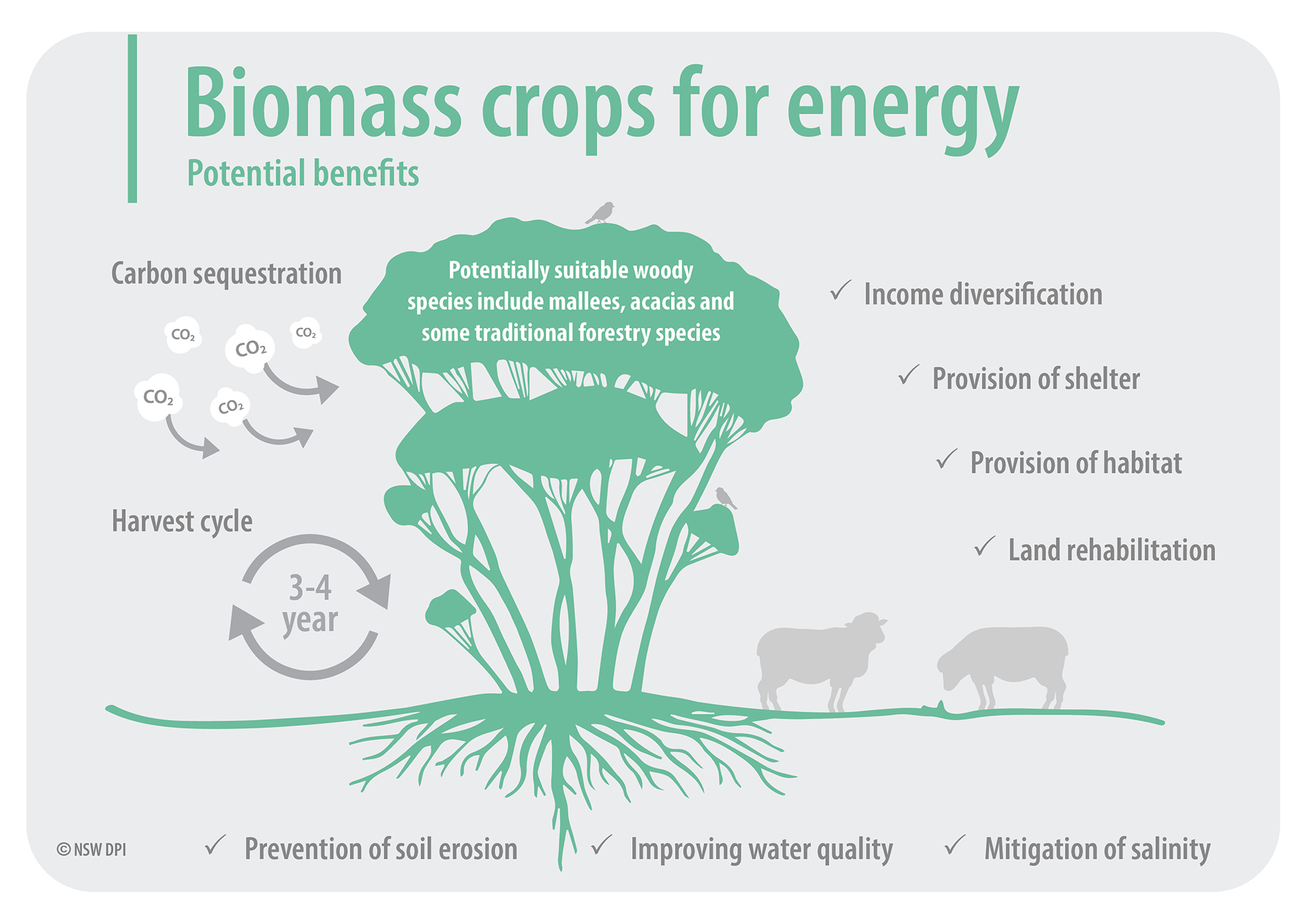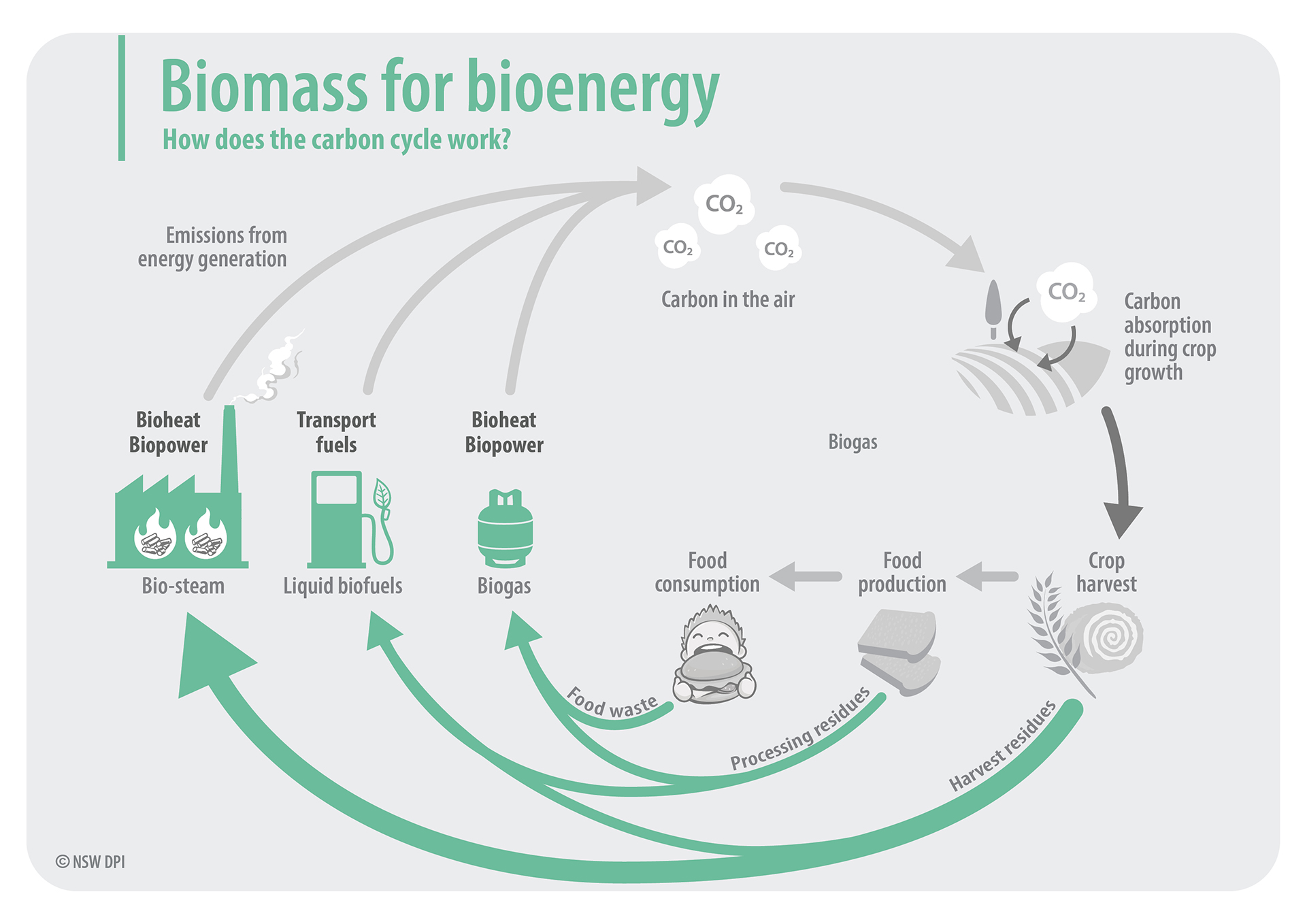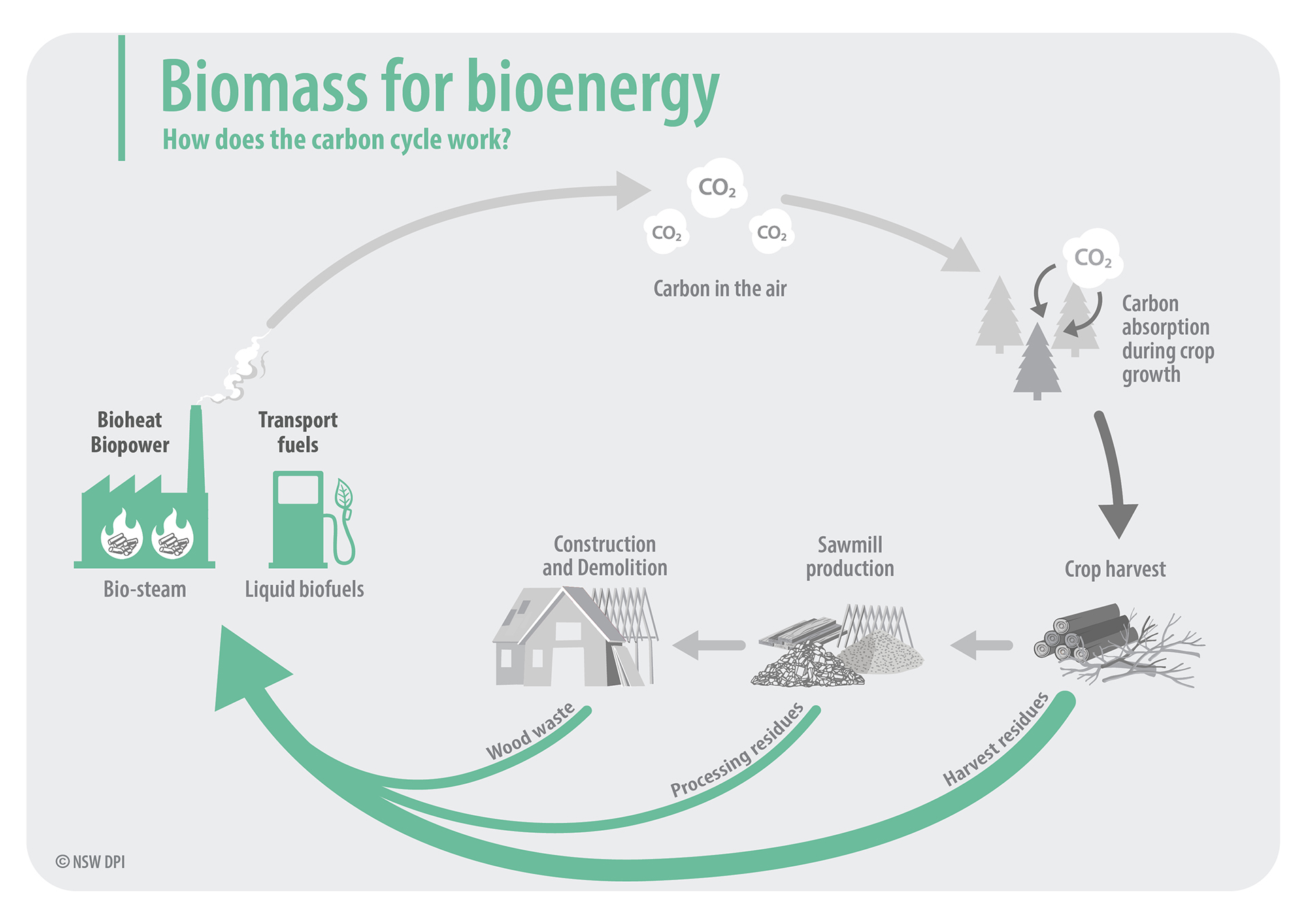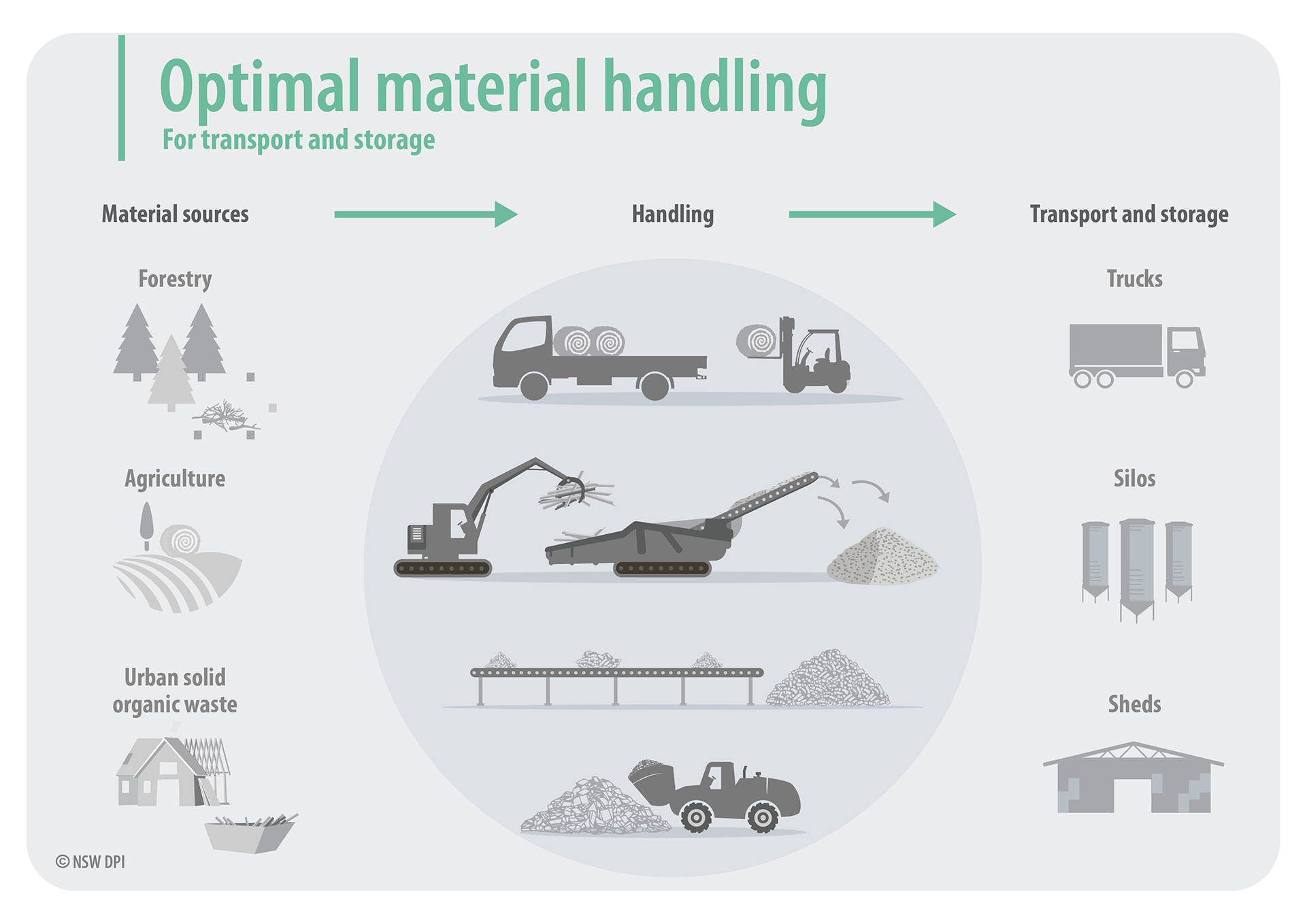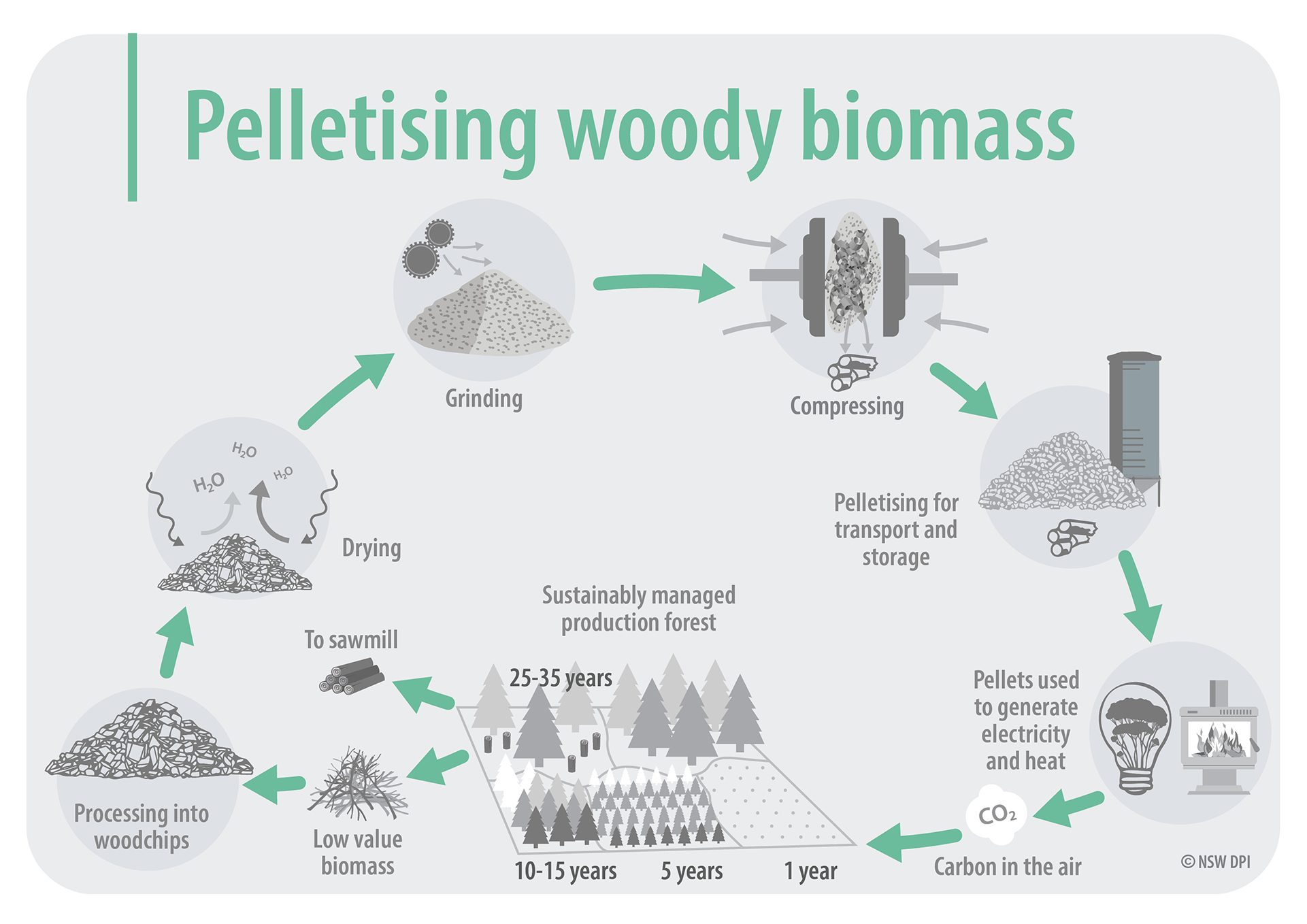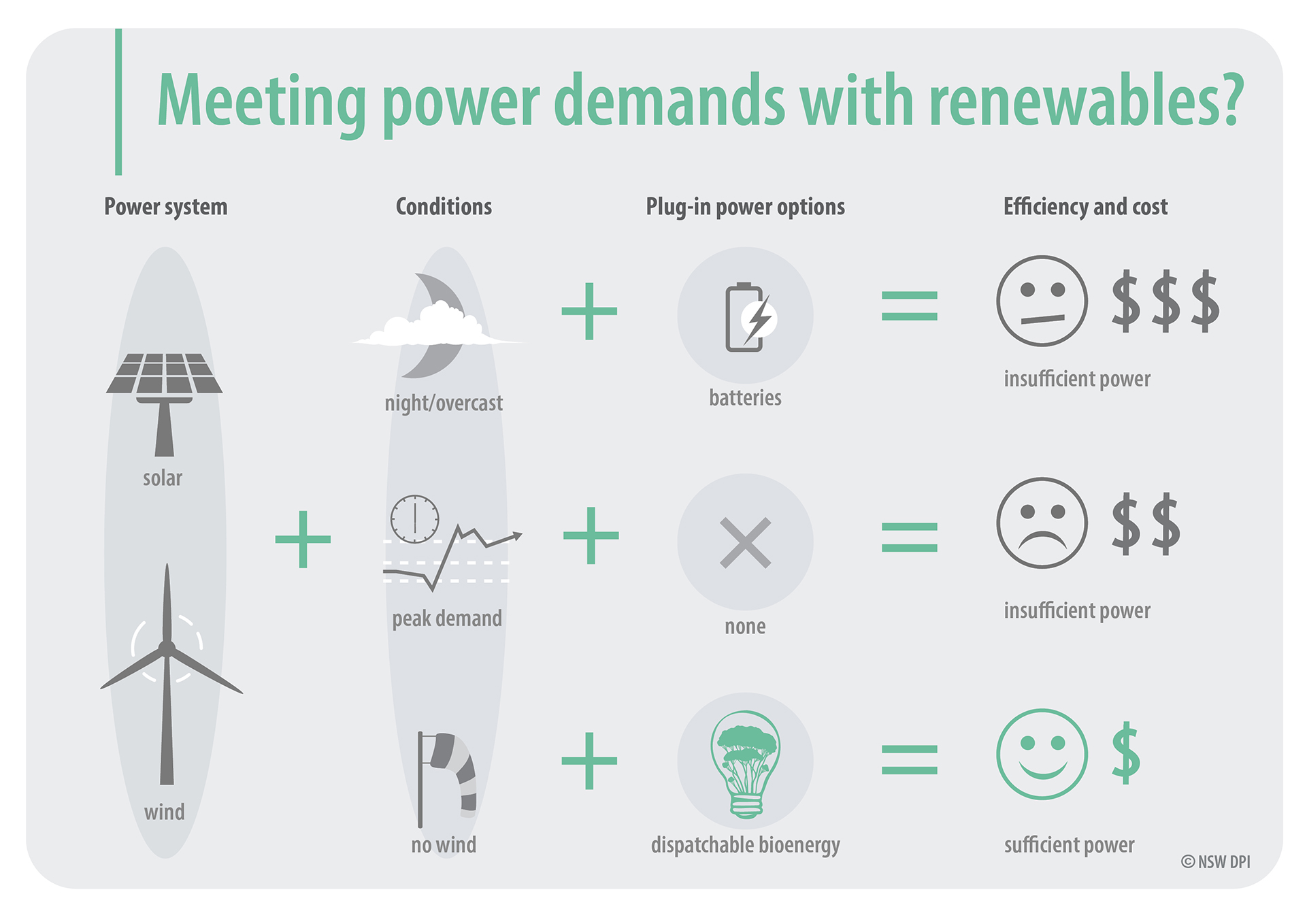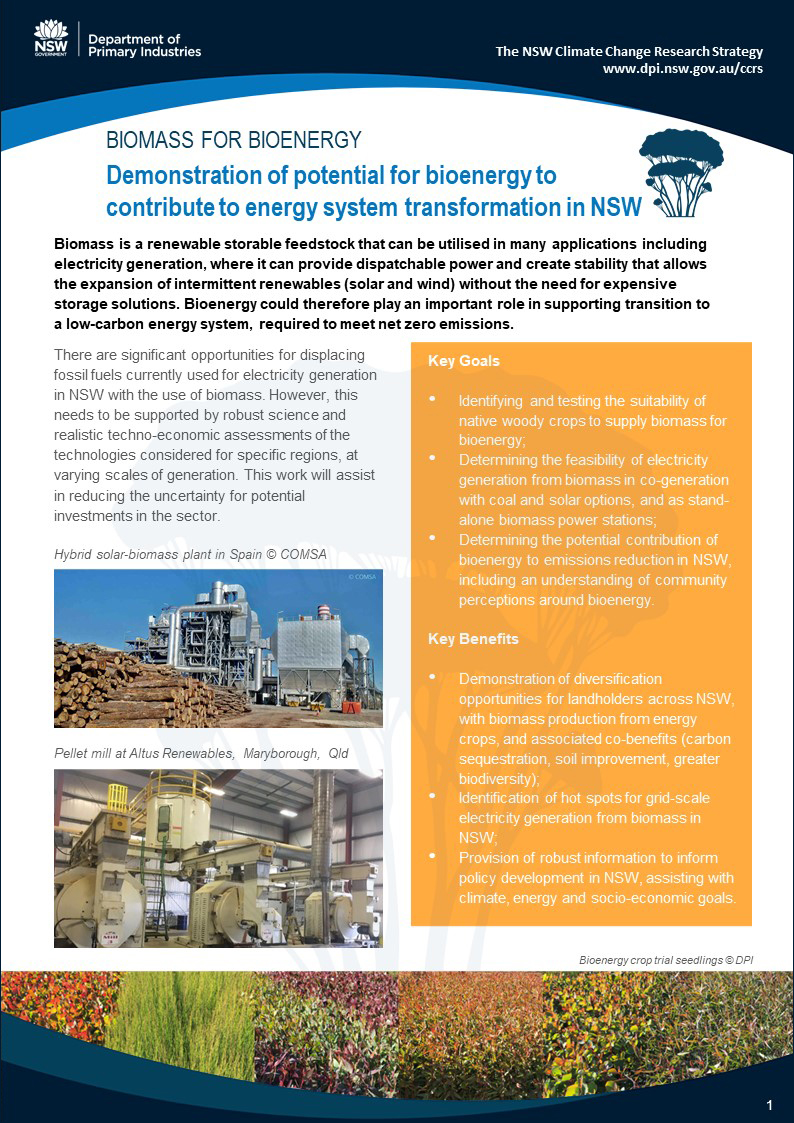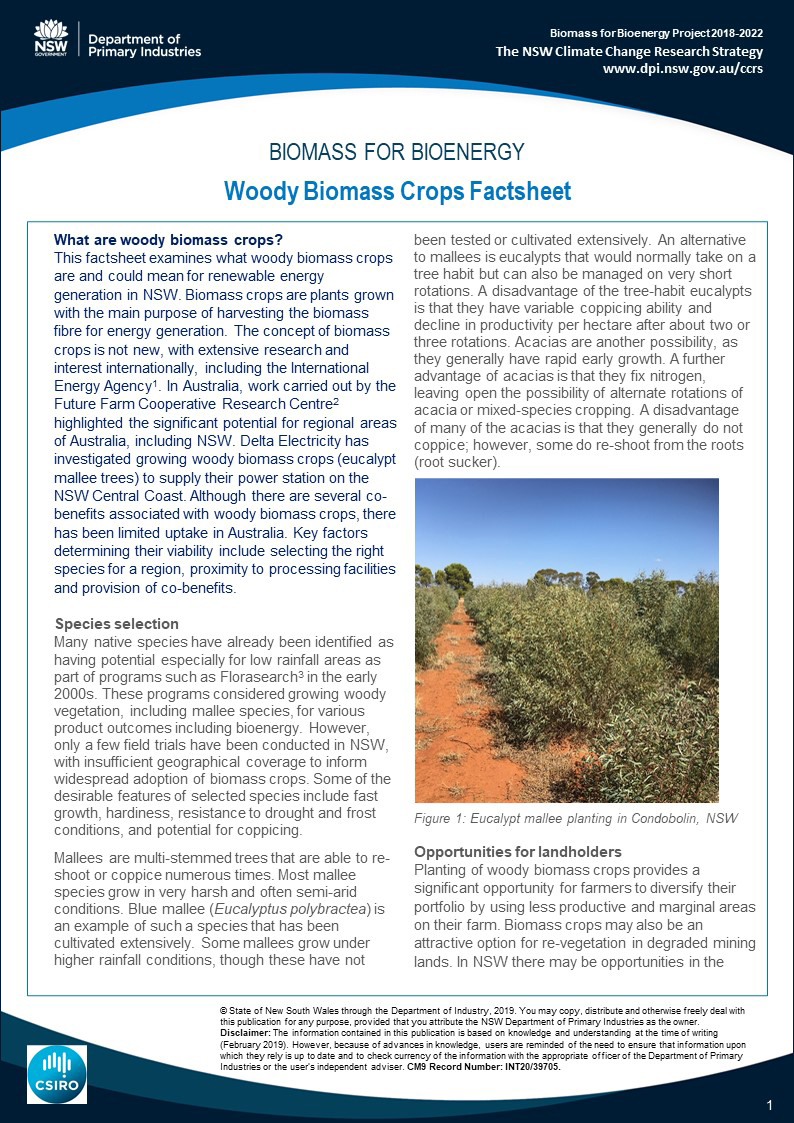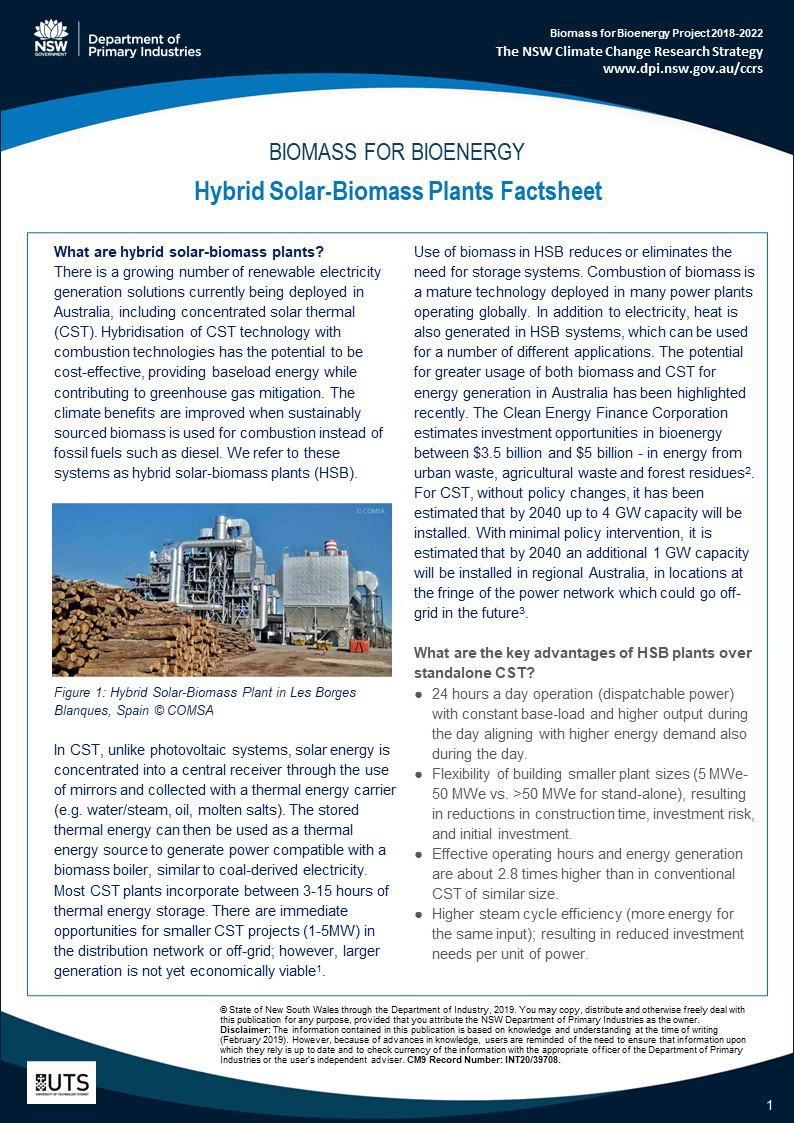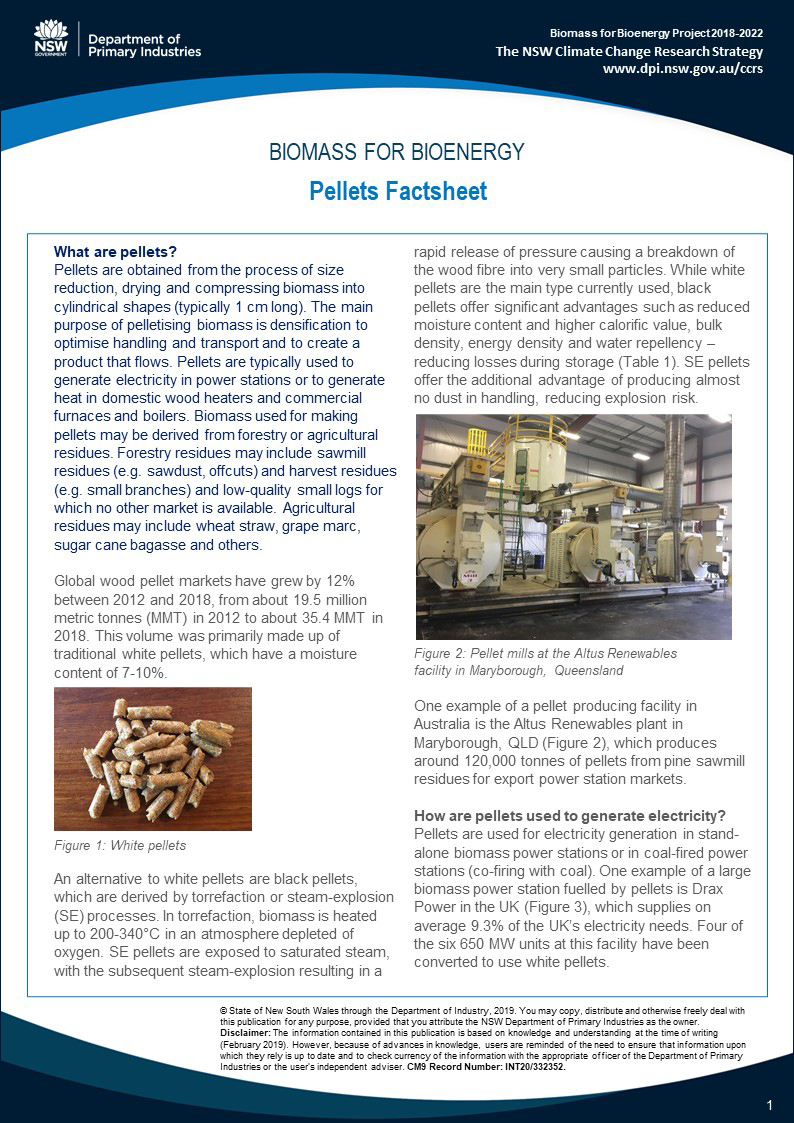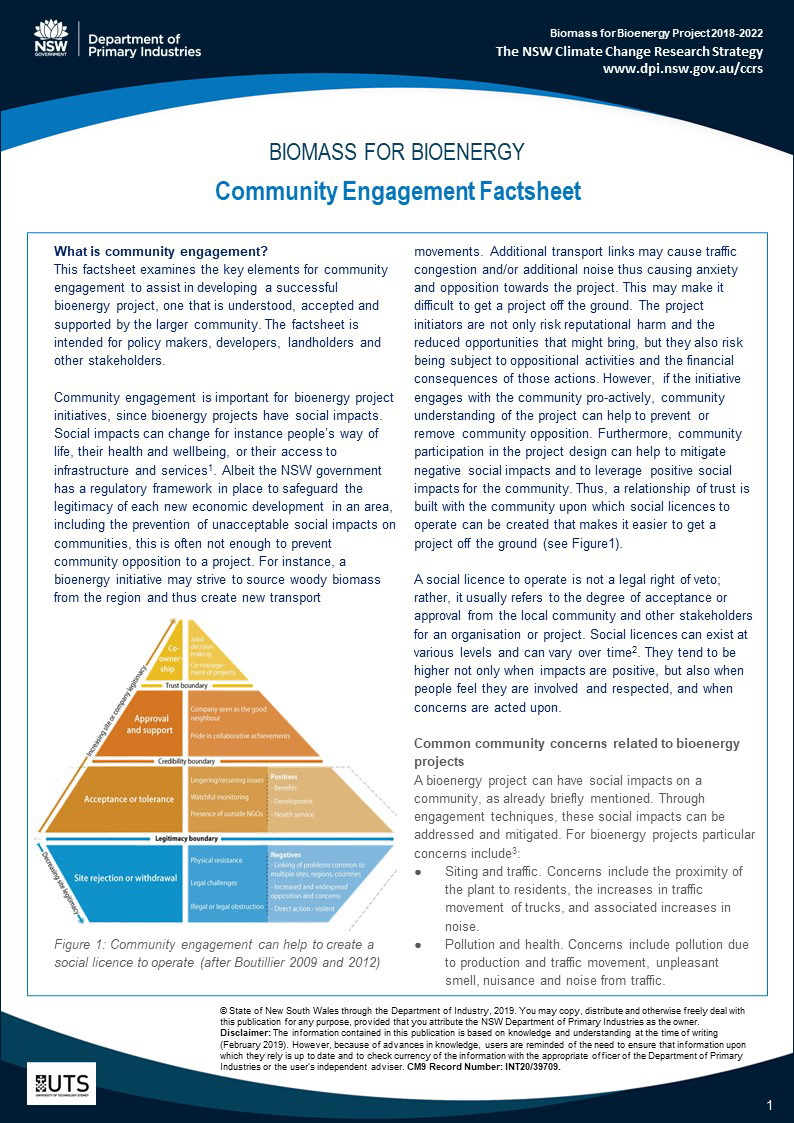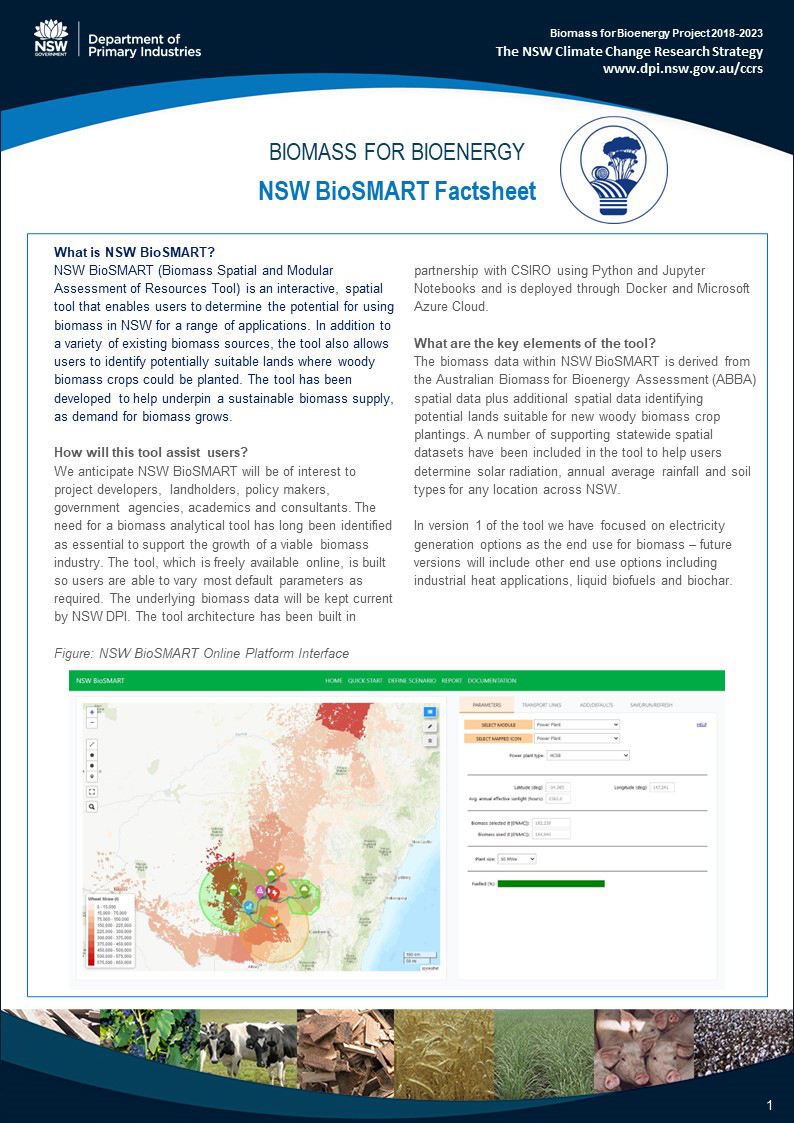
Biomass for Bioenergy Project
The Biomass for Bioenergy Project is part of the NSW Climate Change Fund (CCF). It comes under the Primary Industries Climate Change Research Strategy and is Project 3. We are investigating opportunities for increasing the amount of sustainable biomass use in NSW with a focus on electricity generation. The purpose of the project is to identify available and potential feedstocks for bioenergy generation at varying scales, with an understanding of techno-economic and social constraints.
There are a number of topics being investigated in this project, all with a focus on regional NSW. These include the potential of woody biomass crops for bioenergy and technical economic assessments on the use of biomass for electricity generation, including co-firing with coal, stand-alone biomass power stations and hybrid solar-biomass plants. The work also includes an analysis of the climate impacts on the use of biomass for bioenergy and approaches for community engagement and social impact assessments in selected regions. NSW BioSMART (Biomass Spatial and Modular Assessment of Resources Tool) has been developed to enable users to determine the potential for using biomass in NSW for a range of applications.
For more information on specific activities and outcomes please go to the Biomass for Bioenergy Project Factsheet (PDF, 892.96 KB). This project is being carried out in collaboration with the University of Newcastle, Sydney University, University of Technology and CSIRO. Refer to the project poster (JPG, 1665.79 KB) below for an overview of the projects components.
Objectives
- Identify and test the suitability of specific native woody crops to supply biomass for bioenergy;
- In collaboration with industry, test the potential of pellets for electricity generation;
- Conduct techno-economic assessments of hybrid solar-biomass concepts for regional energy generation;
- Analyse potential contribution of bioenergy to emissions reduction in NSW considering factors such as biomass supply, alternative bioenergy technologies and integration within current energy systems;
- Understand community perceptions around bioenergy.
What is bioenergy?
The infographics below explain some of the key concepts of biomass for bioenergy such as:
- the potential benefits of planting dedicated native woody biomass crops;
- the carbon cycle of bioenergy using agricultural cropping and forestry examples to produce bioheat, biopower and transport fuels;
- material handling of biomass including transport and storage;
- how low value woody biomass may be pelletised, and the carbon emitted when the pellets are used to generate electricity and heat is then absorbed by growing trees in a sustainable system;
- how a hybrid solar-biomass plant works, combining concentrated solar power (CSP) with thermal energy from a biomass boiler to supply dispatchable power and heat;
- the potential role for bioenergy to meet power demand in a grid system dominated by renewables.
These infographics are © NSW Department of Primary Industries and Regional Development. They can be shared, copied and redistributed in any medium or format, but must not be adapted, remixed, transformed or built upon for any purpose or in any way. The user must attribute the 'NSW Department of Primary Industries and Regional Development' or 'NSW DPIRD'.
These factsheets outline some of the key topics being investigated under the Biomass for Bioenergy project.
Woody biomass crop trials
The biomass crop trials are being carried out by our team in conjunction with the CSIRO Australian Tree Seed Centre. More than 50,000 trees have been planted across NSW as far north as Glen Innes and as far south as Yanco. These trials are looking at a large number of woody species for potential use as short rotation energy crops on marginal and unproductive land in different climates. Species being trialled include mallees, other eucalypts, acacias and casuarina.
NSW BioSMART tool
NSW BioSMART (Biomass Spatial and Modular Assessment of Resources Tool) is an interactive, spatial tool that enables users to determine the potential for using biomass in NSW for a range of applications. NSW BioSMART will be of interest to project developers, landholders, policy makers, government agencies, academics and consultants. The biomass data within the tool is derived from the Australian Biomass for Bioenergy Assessment (ABBA) spatial data plus additional spatial data identifying potential lands suitable for new woody biomass crop plantings. Version 1 of the tool has focused on electricity generation options as the end use for biomass - future versions will include other end use options including industrial heat applications, liquid biofuels and biochar. To start using the tool visit our NSW BioSMART Tool page.
Other resources
Below are a number of publications and presentations related to the project and useful links to other relevant sites.
Contact us
For information about this project please email:
Fabiano Ximenes | Leader & Senior Research Scientist
fabiano.ximenes@dpi.nsw.gov.au
Catherine Carney | Research Officer
cath.carney@dpi.nsw.gov.au
For additional information about the Climate Change Research Strategy please email climatechangestrategy@dpi.nsw.gov.au

